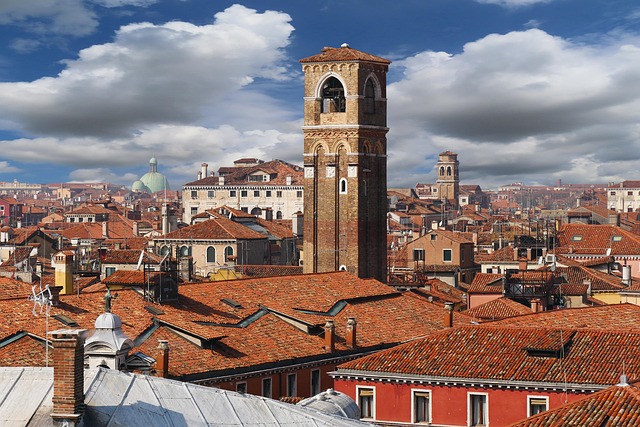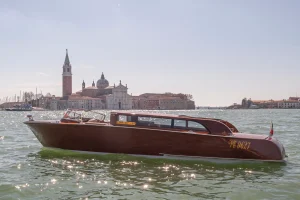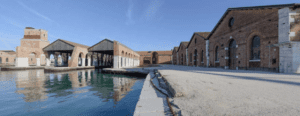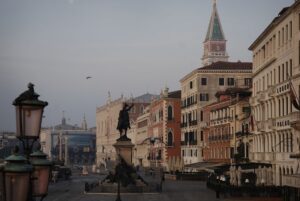Venice is one of those places that makes people scratch their heads. You arrive, see palaces floating on the water, boats instead of cars, and think: “Wait… how is this city even standing?” 🤔
The answer is equal parts brilliant engineering, human determination, and a lot of wood. Yes — wood. Let’s break it down simply (but cooler than your average history book) 👇
🧠 Step 1: Start with a Swampy Lagoon
Over 1,500 years ago, the Venetian Lagoon was basically a giant muddy swamp — full of marshes, shifting sandbanks, and little islands.
People fled here in the 5th and 6th centuries to escape invasions on the mainland. The lagoon was a safe hiding place: no enemy wanted to march through waist-deep mud.
But there was one big problem: mud isn’t great for building cities. 🫧
🌿 Step 2: Find Some Solid-ish Ground
Early Venetians settled on small natural islands — places like Rialto, Torcello, and Murano. These were slightly higher patches in the lagoon, but still marshy. To build permanent structures, they needed to create stable foundations.
🌲 Step 3: Hammer a Forest into the Mud 🪵🔨
Here’s the genius part. Venetians brought millions of wooden poles — often alder, oak, or larch — from forests in northern Italy, the Balkans, and beyond.
Then they hammered these poles deep into the lagoon’s clay and mud, until they hit a layer of compacted sand.
- The wood didn’t rot because it was underwater, with no oxygen.
- Instead, it petrified over time, becoming incredibly strong.
- These poles basically turned the marsh into a massive wooden platform.
Imagine planting a giant upside-down forest beneath the city. 🌲🌲🌲
👉 Check out our Venice Walking Tours to see some of these ancient foundations up close.
🧱 Step 4: Add Stone Platforms on Top 🧱
Once the wooden piles were in place, builders laid wooden beams horizontally to create a stable base. Then they added Istrian stone — a super hard, waterproof limestone from Croatia — to make a solid platform.
This stone doesn’t absorb water, which made it perfect for the city’s lower levels, canals, and quays.
Essentially, every Venetian building sits on a sandwich of mud, wood, and stone. 🥪
🏗️ Step 5: Build Palaces Like You Mean It 🏰
Once the foundations were stable, the Venetians built brick walls and marble facades. Gothic windows, ornate balconies, and elaborate arches came later — when Venice became a maritime superpower and wanted to show off. 💅
Because the buildings sit on piles, they don’t “float” — they’re anchored deep below the water, resting on solid foundations. The canals simply flow between these structures like streets.
👉 If you love history with a twist, our Private Walking Tours dig into the layers beneath the beauty.
🚤 Bonus: Why Venice Doesn’t Sink (Too Fast)
Venice is slowly sinking — but not because the foundations are failing. Those wooden piles are incredibly stable. The sinking mostly comes from natural subsidence (the ground compacting) and rising sea levels.
For centuries, Venice has held strong thanks to this incredible engineering. Modern projects like MOSE (the tide barrier system) are now helping protect it from high tides.
👉 Want to learn more? Read our Acqua Alta Guide for how tides and floods really work here.
🧠 Fun Facts to Impress Your Friends
- Venice uses an estimated 60 million wooden piles under its foundations. 😳
- Many piles are still the original ones — over 500 years old.
- Rialto Bridge alone stands on 12,000 wooden piles.
- The wood becomes stronger over time because underwater it mineralizes, almost like stone.
- If you drained the canals (don’t!), you’d see a forest of wooden stakes holding everything up.
✨ Final Thought
Venice wasn’t built on water — it was built in the water, above the mud, and on top of millions of wooden poles. 🪵🌊 It’s a miracle of human ingenuity that’s lasted more than a millennium.
So next time you glide down the Grand Canal, imagine the hidden forest beneath your feet — the silent structure holding this floating masterpiece together. 🇮🇹✨
👉 Explore the city’s incredible history from the ground up with our Private Tours of Venice — because the coolest stories are the ones just beneath the surface.







